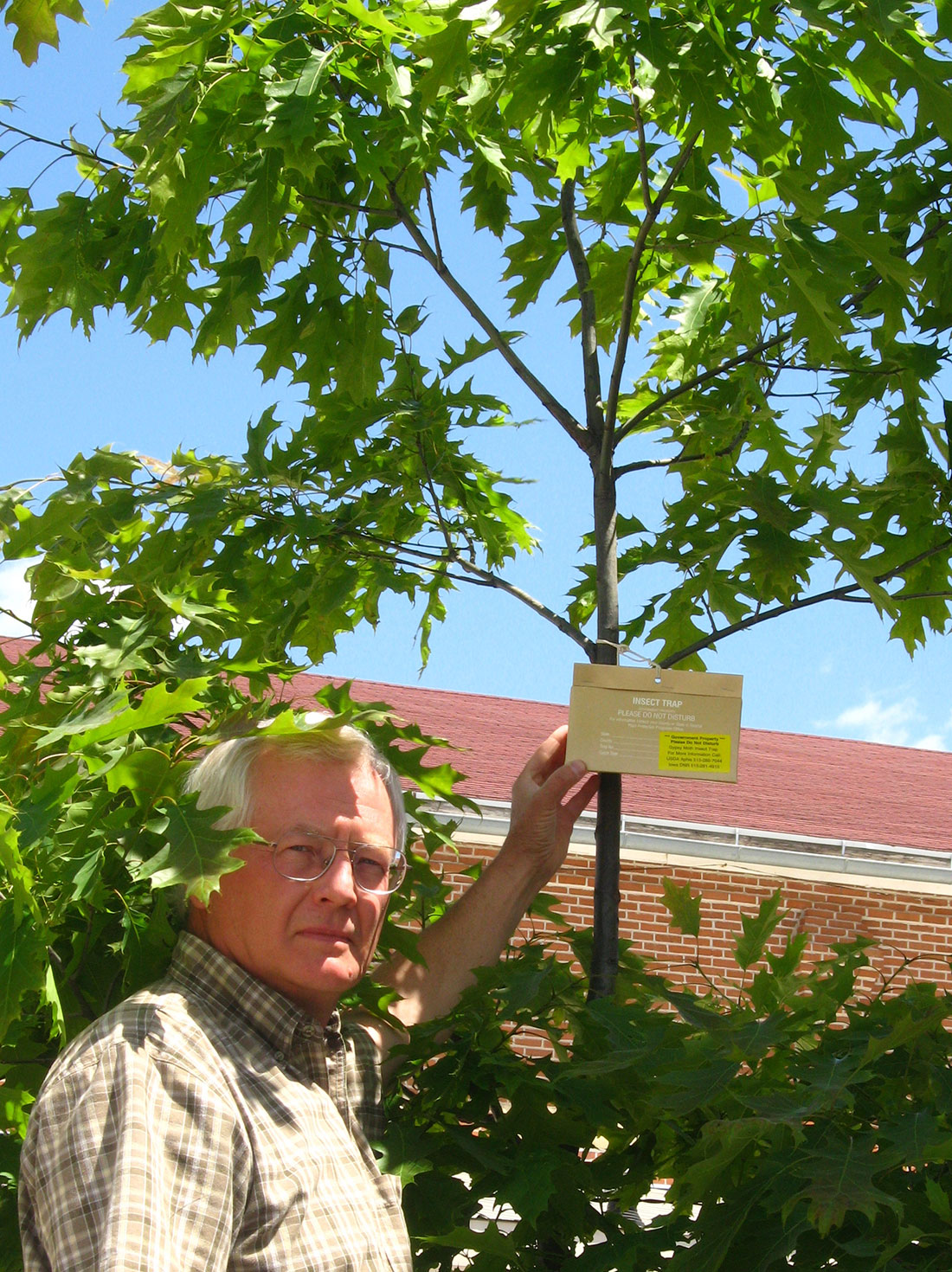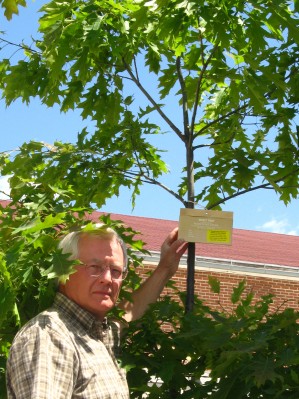
11 Jun Northeast Iowa RC&D Gypsy Moth Monitoring for 2013
 The gypsy moth is a non-native, serious pest of over 600 hardwood tree and shrub species. The gypsy moth damages the plants when the caterpillar stage eats the leaves. When there are many caterpillars and the damage occurs over several years, the continual defoliation can weaken and sometimes kill the trees.
The gypsy moth is a non-native, serious pest of over 600 hardwood tree and shrub species. The gypsy moth damages the plants when the caterpillar stage eats the leaves. When there are many caterpillars and the damage occurs over several years, the continual defoliation can weaken and sometimes kill the trees.
The gypsy moth is a native of Europe, Asia, and North Africa. It was brought to the United States in 1868 by scientist Etienne Leopold Trouvelot to Massachusetts to breed with other moths for a new strain of silk-producing caterpillars or “silkworms.” The experiment failed and some of his caterpillars eventually escaped. With an abundant source of food and few natural enemies in the United States, it has been moving west and south ever since.
The most common method of spread of the gypsy moth occurs when egg masses, which resemble a tan or buff-colored piece of fungus and are from the size of a nickel up to a 50-cent piece, are deposited on vehicles or any outdoor items, such as firewood, which are later moved. The moths can also be moved in the early caterpillar stage by the wind, and as hitchhiking adult moths.
It is important to know the gypsy moth is not established in Iowa. It is known to exist in several eastern states and is established just outside Iowa’s border in Wisconsin. If the gypsy moth becomes established in Iowa, it is important to detect it at the earliest possible time so hopefully it can be prevented from becoming a problem.
Recognizing the gypsy moth is an important part of preventing infestations and severe damage to Iowa’s woodlands and urban landscapes. The males are brown, with several black wing markings. As with other moths, the males have noticeable, feathery antennae. The wingspan of the male moth is about 1.5 inches. The females are white or cream colored with distinctive, V-shaped wavy lines or markings on the wings. Females are larger than the males with a wingspan of about 2 inches. Females do not fly, but the males can fly several miles. The caterpillar is identified by 5 pairs of blue dots or knobs, followed by 6 pairs of red dots along the top of the caterpillar. They are only ¼ inch long at first, but grow to almost 3 inches.
Last spring 3,559 gypsy moth traps were placed throughout Iowa by the “Gypsy Moth Slow the Spread Foundation” (www.gmsts.org/) in partnership with IA DNR Forestry, NE IA Resource Conservation & Development, and USDA and IDALS . The traps were picked up in the fall with a total of 201 traps capturing 269 male moths. Because of the low number of male moths captured, no mating disruption treatments are planned for 2014.
The triangular traps are 3.5 inches high and 7 inches long and placed in trees or on posts. Each trap is labeled as government property and coded for location. Each trap also contains a non-toxic pheromone designed to lure adult males. Once inside the moth is caught in a sticky substance coating the trap’s interior. The person who placed the trap will remove it in late August or early September and the traps sent to the Iowa DNR and Iowa Dept. of Agriculture and Land Stewardship in Des Moines for inspection. The public is asked to please not disturb the traps. If you find a trap on the ground, please call one of the phone numbers listed on the label.
If you have any questions or think you may have a gypsy moth, please feel free to contact:
Tivon Feeley, IA DNR Forestry Health, 515-281-4915, tivon.feeley@dnr.state.ia.us
Or Richard Kittelson, NE IA RC&D, 563-864-7112, kittelson@northeastiowarcd.org


